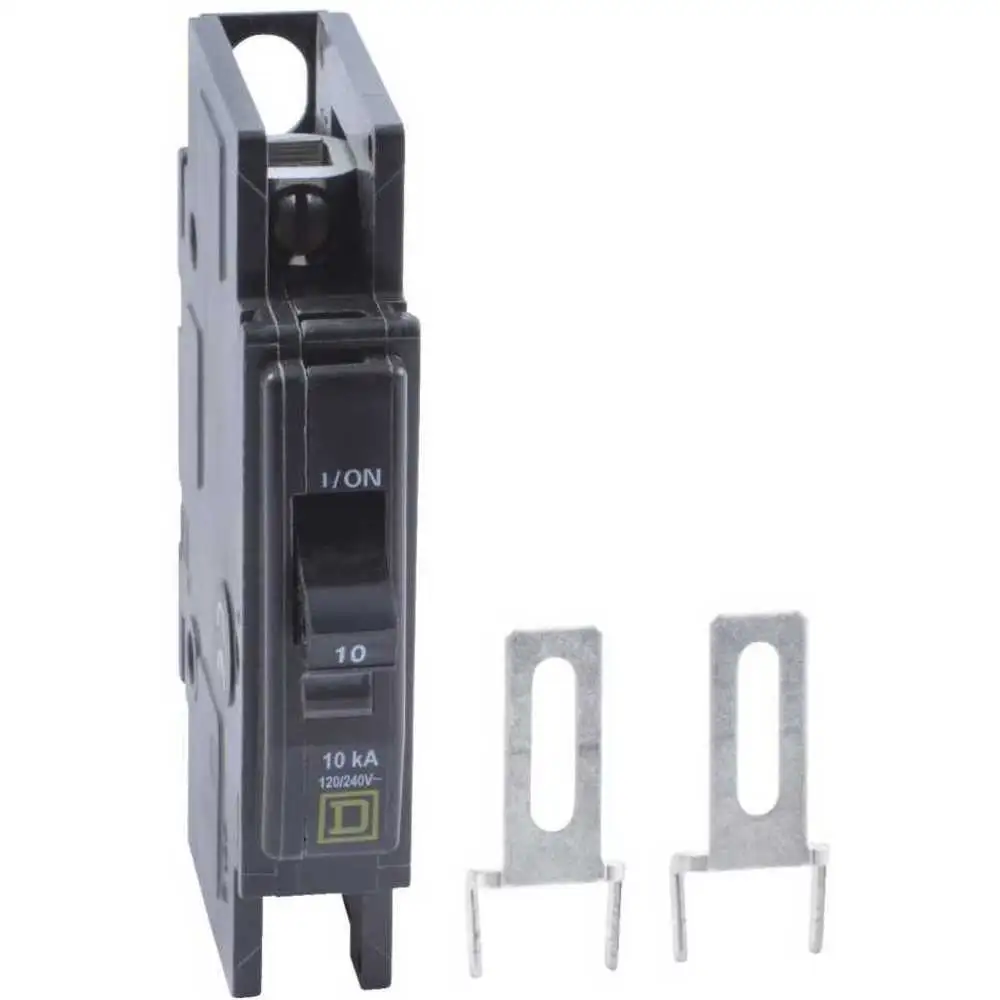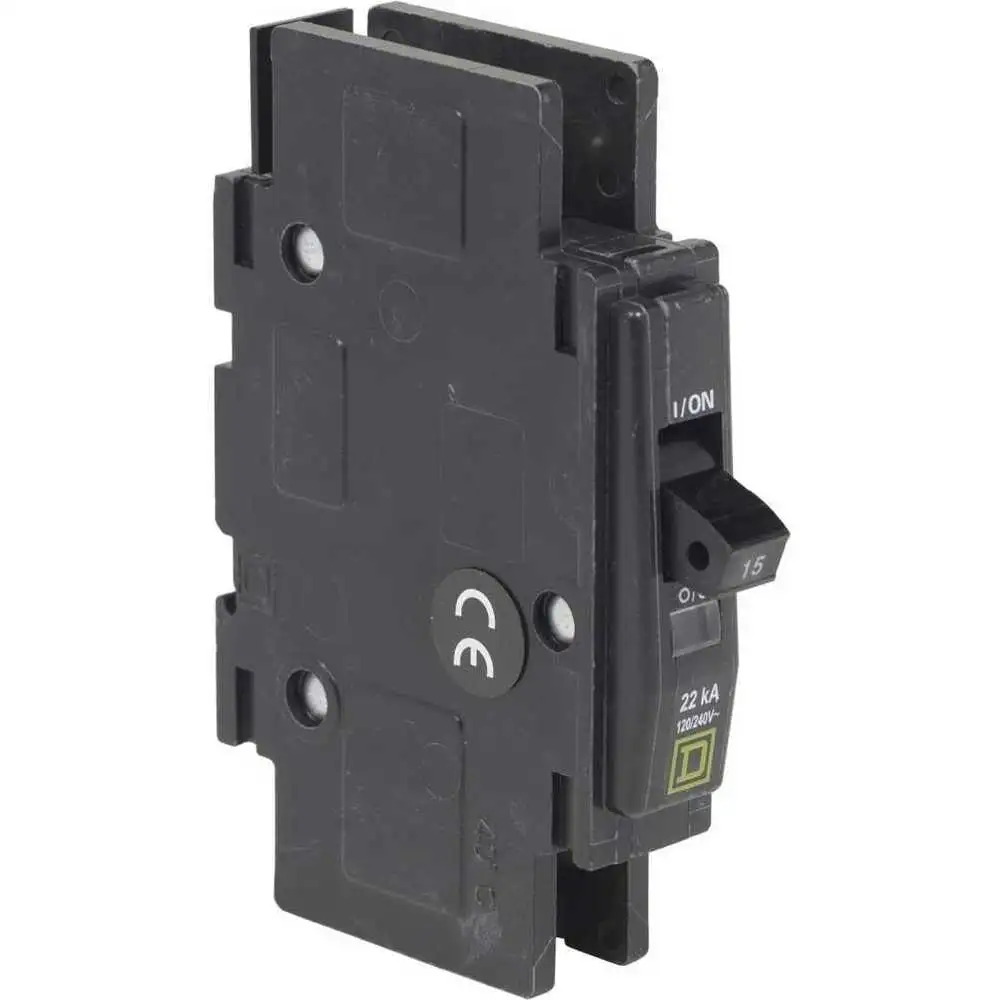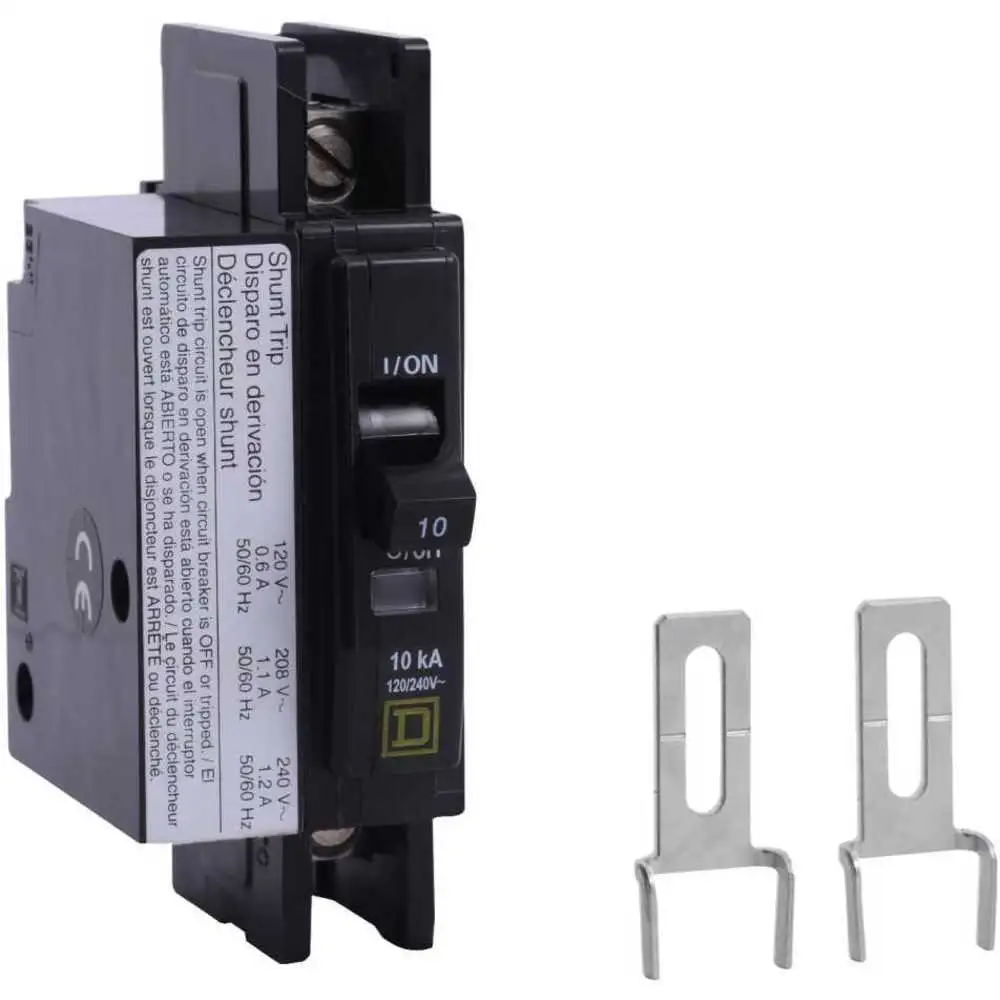Square D QOU110 miniature circuit breaker is used in commercial electrical systems to provide overcurrent protection, preventing damage and fires. It is ideal for protecting branch circuits, lighting and outlets, ensuring safe and reliable electricity distribution in buildings and offices.
Features:
- This single pole circuit breaker features a toggle actuator for easy manual operation and a DC voltage rating of 48VDC.
- It can be mounted either on the surface or on a DIN rail, providing flexibility in installation.
- This Square D QOU110 circuit breaker has terminal connections with slotted box lugs, which are reversible for both line and load connections.
- It has a frame size of 100A / QOU and can accommodate wire sizes ranging from 14 to 2 AWG.
Frequently Asked Questions:
Q. How do I install Square D QOU110 mini breaker?
A.
- Turn off power to the panelboard by switching off the main breaker or disconnecting the power source.
- Choose a compatible slot in the panelboard for the QOU110 circuit breaker.
- Connect the load and line wires to the appropriate terminals on this QOU110 circuit breaker.
- Align and securely snap the breaker into the chosen slot, ensuring proper engagement.
- Close the panelboard cover, turn on the power, and test the circuit to ensure proper functioning.
Q. How to reset this miniature breaker after it trips?
A. After identifying and addressing the cause of the trip, you can reset the breaker by toggling its actuator to the OFF position and then back to ON.
Q. What wire size can Square D QOU110 mini breakeraccomodates?
A. It can accommodate 14 to 2 AWG aluminium / copper wires.
Q. What maintenance does this miniature circuit breaker box require?
A. Regularly inspect the breaker for signs of wear, overheating or corrosion. Verify that connections are tight and there's no physical damage.
Q. How do I clean and maintain Square D QOU110 miniature circuit breaker?
A.
A.- De-energise the circuit.
- Carefully remove the breaker.
- Inspect for damage or wear.
- Use a clean, dry cloth for cleaning.
- Replace if damaged.
- Reinstall securely.
- Restore power and verify functionality.
Q. When should I replace this miniature circuit breaker?
A.
- If it trips frequently.
- When damaged or worn.
- After a significant electrical fault.
- When unable to reset.
- If it no longer provides overcurrent protection.
Q. What factors should I consider while choosing a circuit breaker?
A.
A.- Current rating
- Voltage rating
- Trip type
- Number of poles
- Short circuit rating
- Applications
- Electrical standards compliance
 Change Country
Change Country


 In Stock : 497 Units
In Stock : 497 Units
